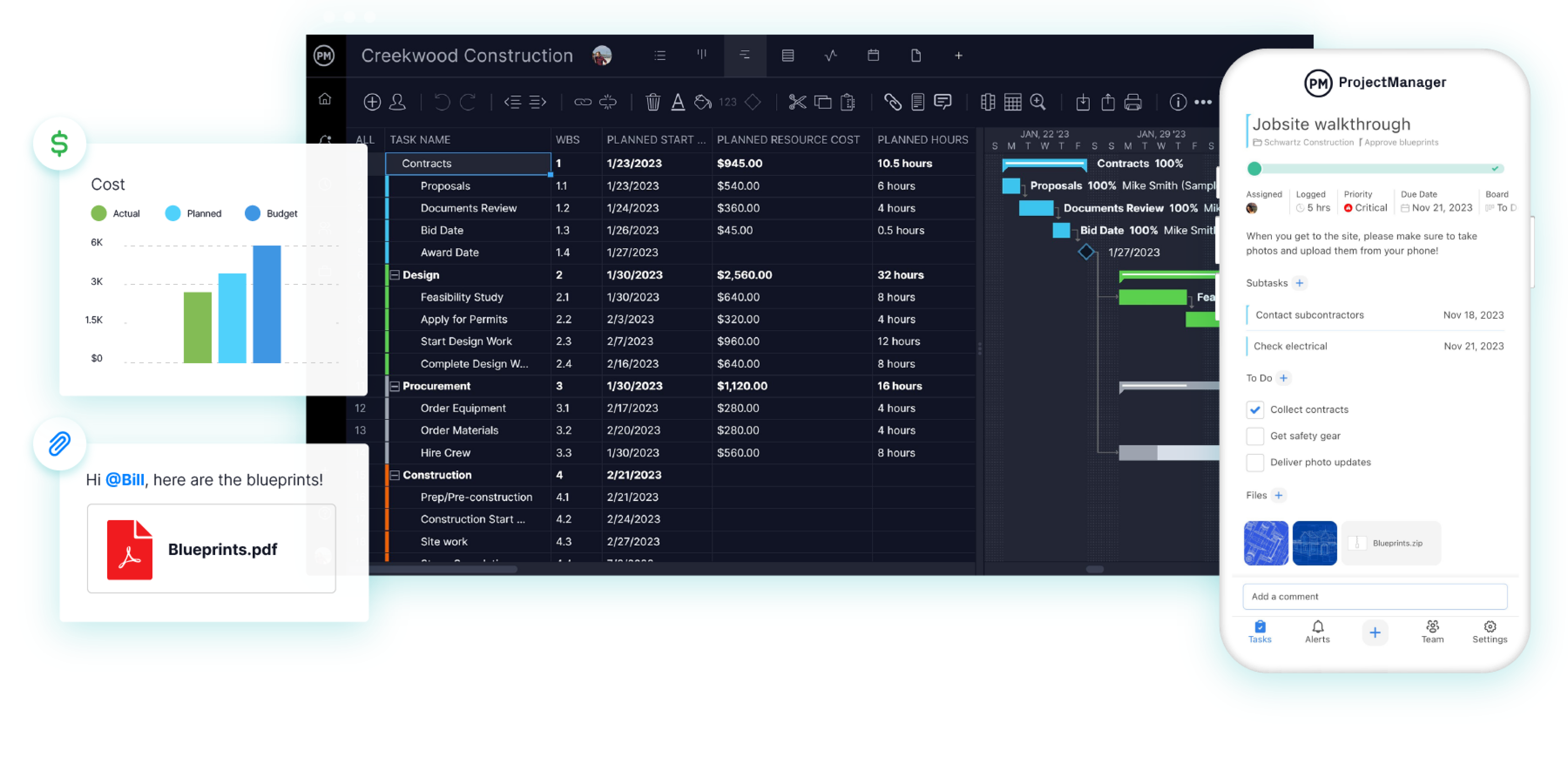Construction Software for Effective Project Planning and Execution
Construction Software for Effective Project Planning and Execution
Blog Article
Tailored Construction Management Software Application: Optimizing Source Appropriation and Budgeting Approaches
These sophisticated devices provide a nuanced strategy to enhancing source allotment and budgeting approaches, vital parts for successful job implementation. By delving into the details of how such software program can boost resource allowance approaches and refine budget plan optimization strategies, a clear path toward increased project effectiveness arises.
Advantages of Tailored Software Solutions
Tailored software application remedies offer a myriad of advantages to building monitoring companies looking for to enhance performance and improve procedures. One crucial advantage is the modification of features to align with the particular requirements of the building sector (australian construction software). By tailoring software application options to attend to task monitoring, organizing, budgeting, and source allowance, companies can enhance their process and accomplish higher productivity. Additionally, tailored software permits smooth assimilation with existing systems, lowering the demand for hand-operated information entrance and reducing errors.
Another benefit of tailored software program options is the ability to give real-time understandings and analytics. Construction management companies can utilize data-driven decision-making to monitor job development, identify traffic jams, and make modifications immediately. This positive approach improves project results and helps companies stay on track with timelines and spending plans.

Improved Source Allocation Techniques
Applying efficient resource appropriation methods is vital for building and construction management firms to maximize task outcomes and make best use of productivity. Enhanced resource allowance approaches involve tactically designating employees, tools, and materials to particular tasks to make sure optimum application of resources. One key element of improved source allowance is the capacity to properly anticipate task requirements and allocate resources accordingly. By leveraging building administration software application that uses real-time monitoring and reporting functions, firms can dynamically change allowances as job needs develop, resulting in enhanced effectiveness and cost-effectiveness.
Moreover, enhanced source allowance methods make it possible for building firms to recognize and deal with potential traffic jams or resource restraints proactively. By carrying out normal evaluations of resource use and performance metrics, supervisors can make data-driven decisions to rearrange resources successfully and avoid hold-ups. This proactive strategy not only boosts job timelines yet also decreases the risk of spending plan overruns due to ineffective resource allowance.
Budget Optimization Methods
To achieve optimum financial effectiveness in building projects, efficient budget plan optimization strategies play an essential function in making certain price control and task success. One vital method is the establishment of a comprehensive project budget that assigns sources based on concern and vital requirements. By incorporating these budget optimization methods into construction monitoring software program, project stakeholders can enhance financial planning, source allotment, and overall spending plan management to drive project success and profitability.

Influence On Project Performance
Enhancing construction monitoring software program can dramatically improve project performance by link improving interaction, boosting collaboration, and helping with data-driven decision-making. By systematizing task information, stakeholders can easily access real-time updates, decreasing delays brought on by miscommunication or outdated data. Enhanced partnership features make it possible for staff member to collaborate effortlessly, no matter of their physical area, fostering an extra cohesive and efficient workplace. Furthermore, building and construction administration software application can offer important insights with information analytics, permitting project managers to make informed decisions swiftly and precisely.
Furthermore, the automation of routine tasks such as scheduling, budget plan monitoring, and source allocation can maximize useful time for task teams to concentrate on vital tasks, eventually quickening task distribution. The capacity to check job development in real-time and identify possible go to this web-site traffic jams makes it possible for proactive analytic, avoiding concerns from rising and causing delays. On the whole, the impact of tailored building and construction administration software program on project efficiency like it is obvious, offering an affordable benefit by optimizing process and making the most of efficiency.
Future Trends in Building And Construction Software Application
As the construction industry remains to evolve, innovations in technology are shaping the future landscape of building software program options. One significant fad imminent is the increasing integration of artificial intelligence (AI) and artificial intelligence capabilities in building software application. These technologies have the potential to transform exactly how building projects are taken care of by allowing predictive analytics, automated decision-making processes, and boosted project understandings.
Another future fad in building software is the expanding focus on cloud-based options. Cloud modern technology uses boosted flexibility, scalability, and ease of access for construction teams, enabling real-time collaboration and data sharing throughout task stakeholders. This change in the direction of cloud-based software program is expected to enhance job performance, enhance interaction, and boost general job end results.
Moreover, the increase of Building Information Modeling (BIM) is expected to continue forming the construction software landscape. BIM software program helps with 3D modeling, visualization, and information management, causing boosted task control, lowered mistakes, and boosted job outcomes. Embracing these future patterns in building and construction software application will certainly be critical for firms wanting to stay competitive and drive advancement in the industry.
Conclusion
In final thought, tailored building management software program supplies many benefits such as boosted resource allocation approaches and budget plan optimization techniques. This software program has a considerable influence on task effectiveness by streamlining procedures and improving total performance (evolve construction). As modern technology continues to advance, future patterns in construction software application are anticipated to additional maximize resource allowance and budgeting strategies for building tasks
Report this page